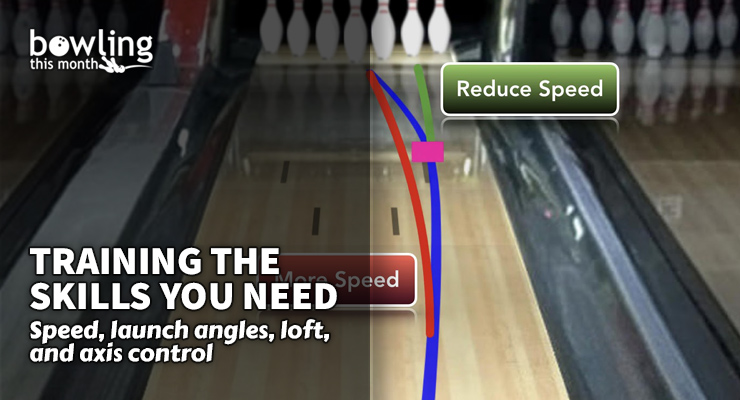Article Contents
- 1. Training speed
- 1.1. Developing speed control
- 1.2. Creating different speeds
- 2. Adjusting launch angle
- 2.1. Zone 1
- 2.2. Zone 2
- 2.3. Zones 3 and 4
- 3. Loft
- 4. Axis control
- 5. Conclusion
Note: This article is only available to Bowling This Month subscribers.
In my last article, we covered the four competition zones and the variables you need to control to compete in each one. This time around, we’ll cover the physical skill variables you’ll need to compete in the four zones, how best to measure them, and how to verify that you’re achieving the consistency you need. We’ll start with speed as the most important skill, and then move on to launch angles, loft, and axis rotation.
The biggest challenge for bowlers is relating the feel of the ball coming off the hand to how the ball ends up going through the pins. This is where you need to verify what you are seeing and feeling so you can internalize the correct feel with the result you are trying to achieve.
Training speed
Ball speed manipulation is one of the most powerful tools in bowling. Master speed and you can dominate the game. There are already several articles relating to speed provided by Bowling This Month, but let’s do a brief review so you can focus on what works better for you. Again, the goal is to develop the skill so you can connect your practice to your competition, so I’ll review different processes to internalize the feel of different speeds.
First, it is important to say that not all ball speed is the same. Though we measure speed in miles per hour (mph), the ball does not maintain a constant speed going down the lane. Friction decreases the ball’s speed, so the speed at the pins is lower than the speed off your hand. More importantly, not all balls travel the same distance on the lane. Straighter lines are more direct and cover less distance than large hooks. Both of these reasons are why the calculation should be done off the bowler’s hand, and not at the pins (like many scoring systems at bowling centers do).
The best athletes in the world can consistently perform at a wide range of speeds. For example, Michael Tang, one of the top up-and-coming young pros, can vary his speed between 15 mph and 22.5 mph. Whatever the competition zones and lane conditions demand as far as speed, he is ready!
Developing speed control
Tracking speed control without access to training technology like Specto, Strike Seeker, or DigiTrax requires your own video setup and that you do some calculations after each shot. Since most bowlers don’t have this high degree of technology in their bowling center, or can’t spend their whole practice doing math instead of throwing bowling balls, ...
Already a premium member? Click here to log in.


 (Only
(Only 